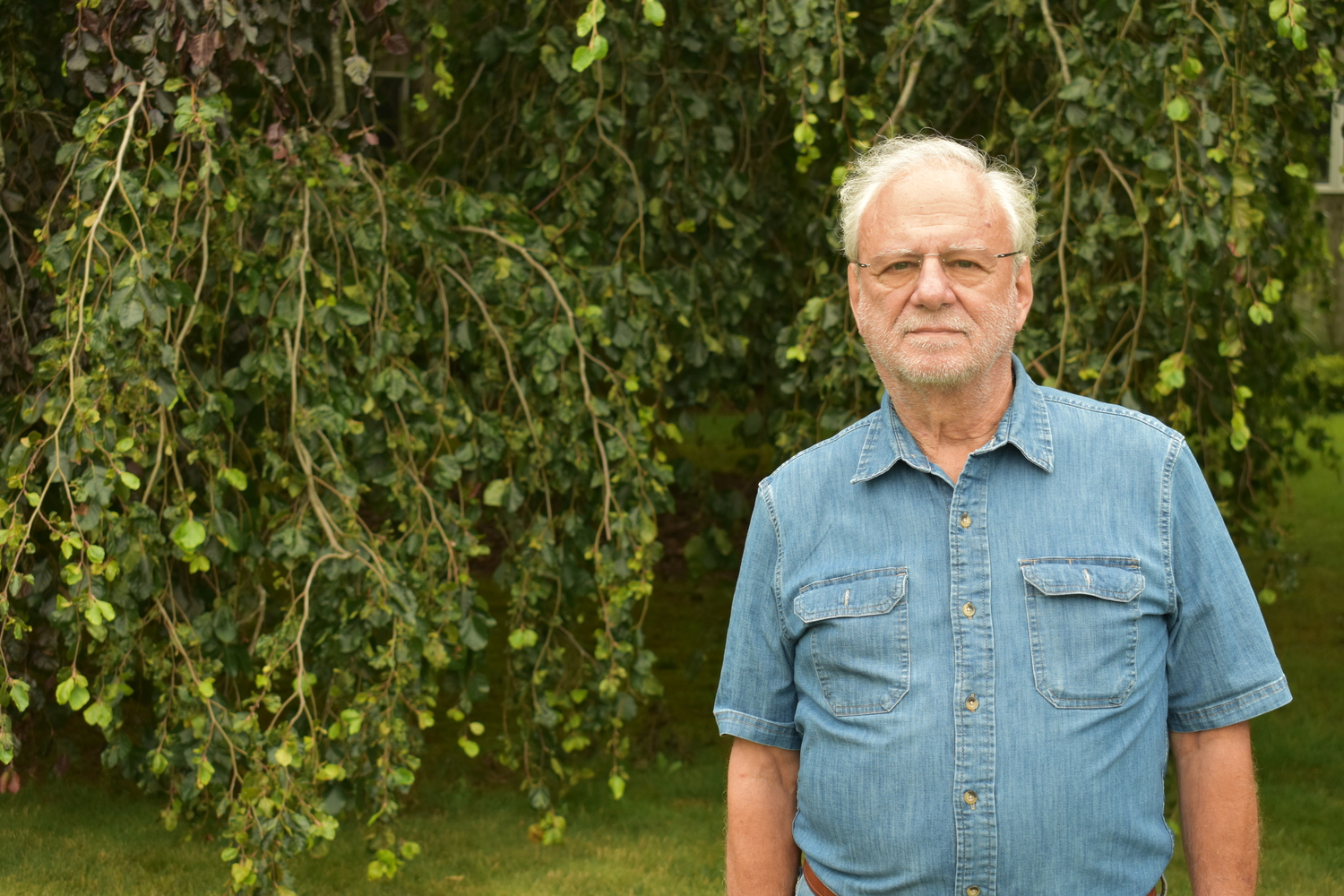
Author and gallerist Louis Meisel boasts having what is likely the largest collection of beech trees in the United States — 34 varieties growing in his own yard and his adjacent sculpture field in Sagaponack.
He started his beech tree collection within a few years of moving to Sagaponack in 1984, and it’s been growing in more ways than one ever since.
Then, last year, he noticed that some trees that were normally lush with dense leaf growth in spring and summer suddenly were looking very thin. The beeches of the Rohanii variety, with crinkled copper leaves, were among those affected, while other varieties did not have the same issue.
Some of his trees had become infected with beech leaf disease, which, according to the State Department of Environmental Conservation, kills both native and ornamental beech trees and is widespread throughout Suffolk County and spreading across the state.
Not much is known about the disease, but it has been linked to the microscopic nematode subspecies Litylenchus crenatae mccannii.
“It seems to me that the Rohanii is the most susceptible,” Meisel said during a walk on his Wilkes Lane property on Friday. He pointed out that other varieties with intertwined roots with his Rohaniis were not showing signs of infection.
Meisel realized that identifying which varieties were afflicted and which were apparently immune, and determining why, would be valuable information to nurseries, growers, plant breeders and property owners. He went on Cornell University’s College of Agriculture and Life Sciences website and looked for professors with the word “epidemiology” — the study of the distribution and cause of diseases — in their resume, then reached out to 12 of them, alerting them to what he was seeing and offering the opportunity to visit his beech collection whenever they wish and take whatever samples would be helpful.
“Cornell Ag is one of the leaders in treating diseases,” Meisel noted.
He suggested to Cornell Ag that his 34 different varieties of beech trees on one site, where some trees are faring well and some are struggling, could be like a laboratory for Cornell, where researchers could figure out what is going on.
“And they’re going to do that,” he said. “They’re going to take beech nuts, they’re going to take cuttings, they’re going to take photographs.”
He pointed out unsightly lines on the underside of leaves on an afflicted tree. “This tree is heavily infected with the nematodes, and you can tell that’s nematode in the leaf,” he said.
The nematodes will eventually kill the leaves, he explained, and if they kill too many leaves on a tree, the tree won’t be able to photosynthesize sunlight and will eventually die if the leaf die-off happens season after season.
“It could take six years, seven or eight years — or two years. Nobody really knows,” Meisel said.
The DEC reports beech leaf disease was first discovered in Ohio in 2012 and has since been found in New York, Pennsylvania, New Jersey, Connecticut, Maine, Massachusetts and Rhode Island, plus Ontario, Canada.
“They’re talking about genetic engineering,” Meisel said of Cornell’s possible solution to beech leaf disease. “That’s not going to help these trees — there is no prevention, there is no cure at the moment — but I think that they can learn from what I have here. And I don’t think there’s any place else in the country where you can see this many varieties all at once. And some of them are pretty big.”
His collection includes a green Tortuosa, which is a dwarf beech, and both a green and a rare copper Asplenifolia, or fern-leaf beech. He also was among the first Americans to have the original weeping copper beech, called Purple Fountain — a variety originally smuggled from Vancouver, Canada, to San Francisco. The fern-leaf and weeping copper beeches as well as his Fastigiata, or upright, copper beeches are doing fine, he reported.
As for his Rohanii, not only are the common copper Rohanii in dire straits, but the rare green Rohanii are also “in serious trouble.”
Meisel’s beech trees make up just one of more than 100 collections he has amassed with his wife, artist Susan Meisel. The collections include art and objects, such as Victorian vases and vintage dairy signs. He said he first learned he could buy balled and burlapped trees after he came to Sagaponack in 1984 and visited a nursery to purchase junipers for their new home.
“As time went on, I decided it’d be nice to collect trees, and after doing a lot of investigating and talking to Charlie Marder, I said, ‘Well, what about beech trees?’” he recalled.
Charlie Marder is the proprietor, along with his wife, Kathleen, of Marders, the Bridgehampton nursery, tree moving and landscape services business. He’s helped Meisel procure and install many beech trees over decades, and he’s even the subject of a sculpture in Meisel’s sculpture field.
Meisel thought beech trees would make for a good collection because there are more than 40 varieties, making it a challenge to get one of each. He also liked that they can stand up to severe weather.
“They have a root structure so that they don’t blow over in hurricanes, like you see with the big balls coming out,” he said. “They are supple, so that the hurricane can bend them right down to the ground. They don’t break like oaks and maples — and they were impervious to most diseases.”